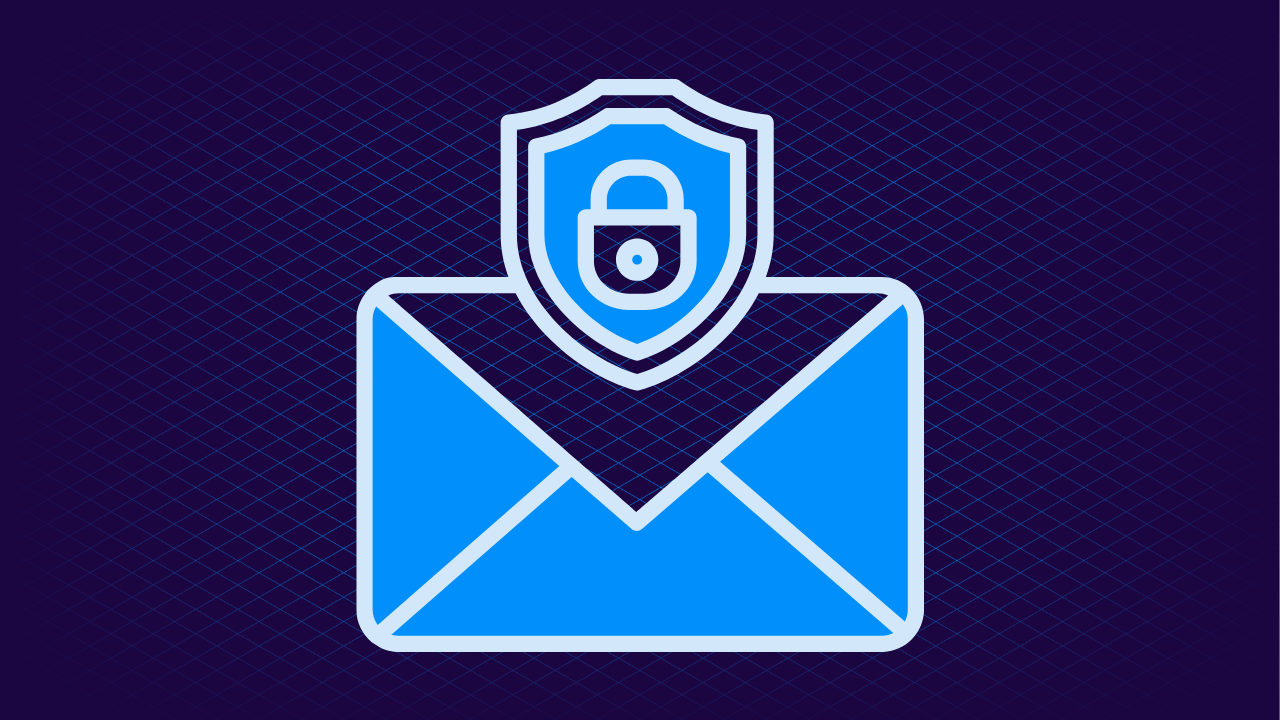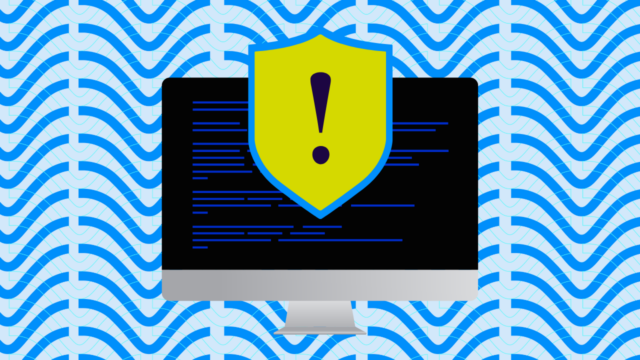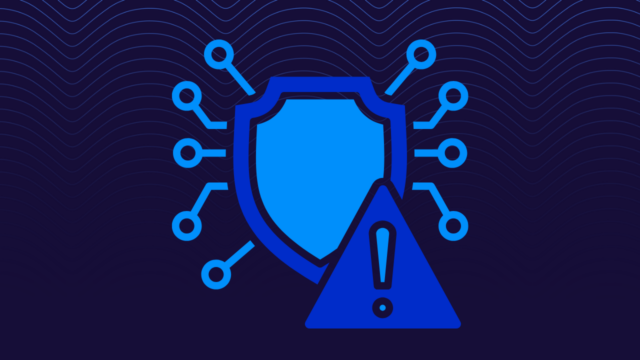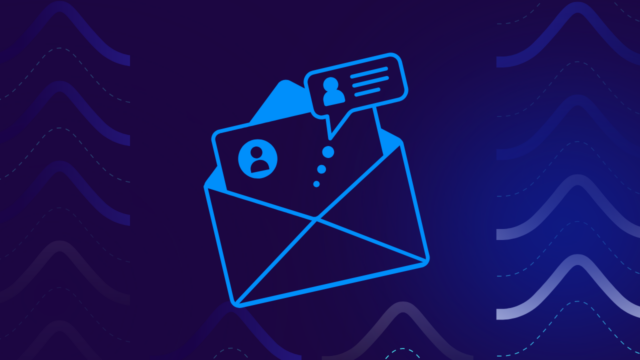So, you’ve finally reached DMARC enforcement? Congratulations. Pop the champagne, do a victory lap around the office, or treat yourself to that fancy coffee you’ve been eyeing. You’ve earned it.
Getting to this point wasn’t easy, and you probably thought at times it wouldn’t happen—but here you are.
However, before you kick back and put your feet up, let’s talk about what comes next.
You see, reaching DMARC enforcement isn’t the finish line—it’s more like achieving a new level in the never-ending game of email security. The good news? This level is way more fun than the grinding you did to get here. You’re no longer just playing defense. Now, you get to see your email security in action and fine-tune it to perfection.
Below, we’ll walk you through the next steps after you reach DMARC enforcement and how to avoid potential obstacles down the road.
What reaching DMARC enforcement means
DMARC enforcement blocks bad actors from using your domain to send phishing emails. When you set your DMARC policy to “p=reject” or “p=quarantine”, you’re telling email receivers worldwide to either turn away (reject) or set aside for further inspection (quarantine) any email that fails DMARC authentication checks.

Reaching DMARC enforcement is a big deal because it transforms your email security from a reactive “whack-a-mole” game to a proactive shield. Here’s why it matters:
- You’re now in control: Instead of hoping receivers will spot malicious emails, you’re explicitly telling them how to handle unauthenticated messages.
- You’ve closed a major security loophole: Cybercriminals can no longer send emails pretending to be from your domain.
- You’re part of the solution: Enforcing DMARC contributes to a safer email ecosystem for everyone. You’re now in an exclusive club of responsible email senders.
Immediate benefits of DMARC enforcement
Achieving DMARC enforcement isn’t just an accolade to hang up on your IT team wall. It has practical real-world benefits:
Improved deliverability
All those legitimate emails that used to mysteriously vanish into the ether (or, more likely, the spam folder)—now they’re landing in the inbox. Inbox providers see your authenticated emails and roll out the red carpet to improve your deliverability rates.
Sure, you’ll still need to follow through on delivering high-quality, engaging emails, but the hardest (most technical) part is behind you now.
Better brand protection
Phishers and scammers can no longer send emails pretending to be you. This means fewer angry calls from customers asking why you’re trying to sell them discount vitamins or why the CEO is requesting gift cards. Your brand reputation stays intact, and your marketing team can breathe a sigh of relief.
Everybody wins.
Reduced phishing attempts
Phishers are likely to move on to easier targets. This will reduce the number of phishing attempts using your domain. It’s like watching would-be burglars take one look at your house and decide to try their luck elsewhere.
How to make the most of your DMARC enforcement
So, you’ve got DMARC enforcement up and running. Awesome! But don’t rest on your laurels just yet. Think of DMARC enforcement as a shiny new car – it’s great to have but to keep it running smoothly, you need to maintain it. Let’s walk through some key steps to ensure you’re squeezing every drop of value out of your DMARC enforcement.
1. Monitor and analyze your DMARC reports
It’s time to take a closer look at your DMARC reports. They show you how well your DMARC is performing and highlight any areas that need attention.
Set aside time each week (or daily if you’re feeling ambitious) to review these reports. Look for any unexpected failures or weird patterns. Ultimately, you’re going to find issues, and that’s alright—email authentication is never a one-and-done process. Investigate these problems and get to the bottom of them sooner rather than later.
2. Fine-tune your SPF and DKIM configurations
Now that you’re at enforcement, it’s time to polish those SPF and DKIM configurations. Keep an eye out for any legitimate emails that are failing authentication. Maybe you forgot about that newsletter service you use rarely, or perhaps your IT team set up a new cloud service without telling anyone (shocking, we know).
Add these to your SPF record and double-check that DKIM is set up correctly. Your goal is to get as close to 100% authentication as possible.
3. Educate your team
Hold a “DMARC Enforcement Party” (okay, maybe call it a “training session” if you want people to actually show up). Explain what DMARC is, why it matters, and how it affects everyone’s day-to-day email practices. The goal is to create a culture of email security awareness, not to bore everyone to tears with technical jargon.
4. Keep an eye on your email infrastructure
Your email infrastructure grows and changes and sometimes does unexpected things when you’re not looking. Stay up-to-date about any changes to your email-sending practices. Are you adopting a new marketing automation solution? Are you starting to send emails from a new cloud service? These changes can impact your DMARC enforcement, so make sure you’re ahead of the game.
5. Consider implementing BIMI
BIMI lets you display your logo next to authenticated emails in supporting inboxes. It’s like having a verified badge on your social media profile but for email. Not only does it look professional, but it also gives recipients an extra visual cue that the email is legit.

Dealing with potential DMARC hiccups
Even with DMARC enforcement in place, you might encounter a few bumps in the road. Don’t panic—it’s perfectly normal, and most issues have relatively straightforward solutions. Think of these as the occasional check engine light in your otherwise smooth-running email authentication machine.
Here are a few common hiccups and how to handle them:
- Legitimate emails failing authentication: Your sales team is freaking out because their emails aren’t reaching clients.
- Solution: Check if the sending service is included in your SPF record and has DKIM set up correctly. If not, add them.
- A sudden spike in authentication failures: Your DMARC reports show a surge in failures out of nowhere.
- Solution: First, rule out a potential attack. Then, check for recent changes in your email infrastructure or new third-party services.
- Overreaching SPF record: You’ve hit the 10 DNS lookup limit for SPF, and now some legitimate services are left out.
- Solution: Time to optimize that SPF record. Use include mechanisms wisely, leverage Valimail’s patented instant SPF, or consider using subdomains for some services.
- DKIM key rotation issues: Your DKIM signatures are failing because someone forgot to update the public key.
- Solution: Implement a process for regular DKIM key rotation and make sure the public keys in your DNS are always up to date. It’s like changing the batteries in your smoke detector – a routine task that prevents bigger problems.
- Alignment issues: Emails are passing SPF or DKIM, but DMARC is still failing.
- Solution: Check your identifier alignment. Make sure your “From” domain aligns with either your SPF or DKIM domain.
- Third-party service troubles: A marketing solution or cloud service you use isn’t playing nice with your DMARC policy.
- Solution: Work with the service provider to guarantee they can authenticate emails properly. If they can’t, consider using a subdomain for that service.
Every hiccup is an opportunity to strengthen your email authentication. Stay calm, investigate thoroughly, and don’t hesitate to seek expert help if you need it.
Maintain (and improve) your DMARC enforcement with Valimail
Maintaining and optimizing your DMARC enforcement can be a lot of work. Between monitoring reports, fine-tuning configurations, and troubleshooting issues, it can feel downright exhausting.
That’s where a dedicated DMARC solution like Valimail comes in handy. Valimail is your email authentication partner—we handle the complex, boring stuff so you can focus on what you do best.
Here’s how we help:
- Automated monitoring and analysis: Valimail monitors your DMARC reports 24/7, so you don’t have to.
- Easy configuration management: Updating your SPF and DKIM configurations should be simple. No more DNS record juggling or SPF syntax headaches.
- Proactive issue detection: Valimail spots potential problems before they become full-blown crises.
- Simplified third-party management: Easily manage and authenticate your third-party senders.
- Expert support: Got a tricky DMARC question? Valimail’s team of email authentication experts has your back.
Don’t let the complexities of DMARC enforcement slow you down or stress you out. With Valimail, you can enjoy all the benefits of email authentication without the headaches. You’ve reached DMARC enforcement—now, let us help you maintain (and streamline) it.
Ready to optimize your email authentication program?



